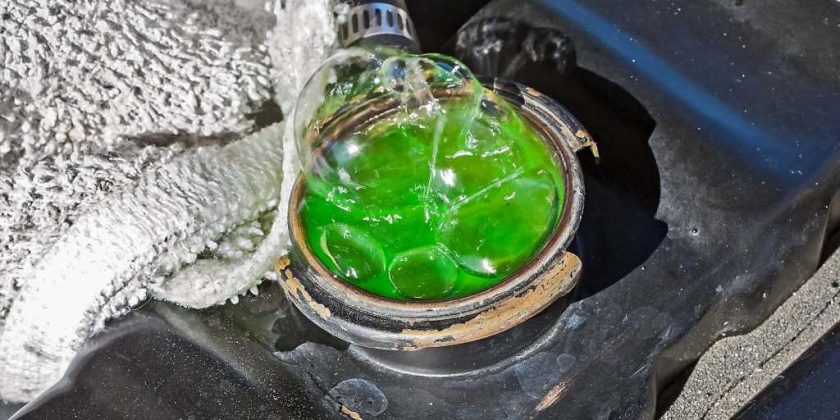Engine coolant flow rate in the motor should have enough time to fully circulate and absorb heat, and in the radiator for efficient heat transfer without getting into laminar flow
Faster is not better when it comes to engine coolant flow rate. The purpose of a radiator is to support heat transfer, which is a time-dependent process. As Flex-a-Lite explains, to move the heat from one medium to another (engine to coolant to radiator to atmosphere), the coolant has to remain in contact with a surface for heat transfer to take place. Moving fluid too quickly through an area can result in laminar flow, where the fluid forms layers. The layer closest to the surface moves slower than layers farther away from the surface. When this occurs, the layers act as insulators and the capacity to transfer heat is diminished.
Photo Credit: David Kennedy
See all 3 photos
For why, see “Why Is The Lower Radiator Hose Larger Than The Upper Radiator Hose?” on the Web.
To achieve the right engine coolant flow rate, the experts at Griffin Radiator recommend restrictions in the engine and good flow in the radiator. Create restrictions in the engine by using smaller top radiator hoses (as on newer production cars). This restriction raises the pressure in the engine block; the higher pressure helps alleviate water pump cavitation, and it also forces engine coolant to fully circulate within the block and cylinder-heads to help pull out heat. Coolant flow within the radiator is controlled by the number and length of the radiator tubes—more and longer is better, due to greater internal surface area for heat transfer.
See all 3 photos
For more on how we solved this car’s seemingly intractable overheating problems, see “1965 Chevy El Camino Overheating Fix” on the Web.
Engine Radiator Coolant-Flow Rate
- Coolant must be in contact with a surface for heat transfer to occur.
- Too high a flow rate may result in laminar flow, which disrupts surface heat transfer.
- Best engine coolant flow rates occur by creating restrictions in the engine block through use of a smaller upper hose.
- Promote good heat transfer in the radiator by increasing the number and length of radiator tubes.
Sources
Flex-a-lite, a Legend Co., Fife, WA, (800)851-1510 (sales) or (253)922-2700 (tech & customer service),Flex-a-lite.com
Griffin Thermal Products, Piedmont, SC, (800)722-3723 or (864)845-5000,GriffinRad.com
See all 3 photos
EMAIL NEWSLETTER SIGN-UP!
Editor-Curated Stories Directly to Your Inbox!
Source: Read Full Article
